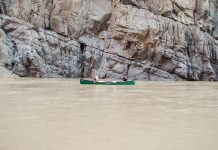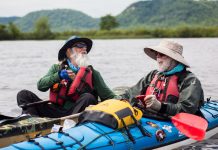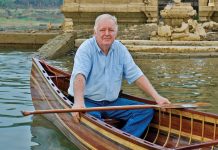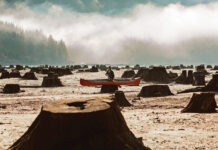Imagine a gaping maw almost five feet wide and filled with 300 rows of tiny teeth. Now picture it right beneath you. Fortunately for you, the largest fish in the world is only interested in massacring tiny zooplankton.
A photographer and global marine life researcher, New Zealander Simon Pierce is fascinated by whale sharks. The average specimen weighs 20 tons.
“Whale sharks are incredibly enigmatic,” says Pierce. “Almost all of the sharks that we see are juvenile males from around five to eight meters long. We still don’t know where the pups live, nor the adults. In fact, in some areas it is rare to even see a female shark. There is plenty of work left to do.”
Sadly, the gentle nature of these ocean leviathans has been exploited through fisheries and high levels of accidental catch. They are now a globally threatened species.
Pierce took this photo at Oslob in the Philippines, where locals have trained wild whale sharks to visit for handouts of shrimp and fish. “It’s a popular tourist attraction,” says Pierce. “It’s a very accessible location for viewing whale sharks but it has some definite negative impacts on the sharks.”

Most of Pierce’s research is conducted via motorboats so the research team can cover large areas to locate the sharks. However, in the Philippines, researchers routinely use paddlecraft, like this outrigger canoe. “The sharks are rarely on the surface, so it’s a matter of paddling for a few minutes, dipping your head underwater with a mask to look for sharks, paddling again,” says Pierce. To take this photo he used a Panasonic GX1 camera in a Nauticam underwater housing, with a Panasonic 8mm fisheye lens and Nauticam dome port.
The fact that whale sharks tend to hang out in some of the most beautiful locations on Earth is just a perk of the job. They like warm water, typically around 270C. “Those places tend to have very rich marine life in general. The nice scenery above water is a fantastic bonus,” says Pierce.
When he’s not crusading for conservation as a scientist with the Marine Megafauna Foundation, Pierce is usually still found outdoors. “There’s a great quote by E. B. White, something along the lines of, ‘I arise in the morning torn between a desire to save the world, and a desire to savor it. This makes it hard to plan the day.’ I get that,” says Pierce.
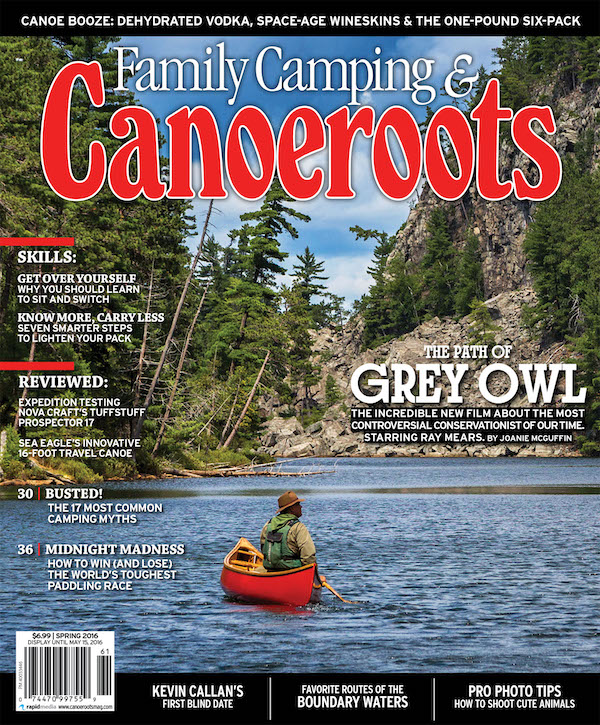
Subscribe to Paddling Magazine and get 25 years of digital magazine archives including our legacy titles: Rapid, Adventure Kayak and Canoeroots.


